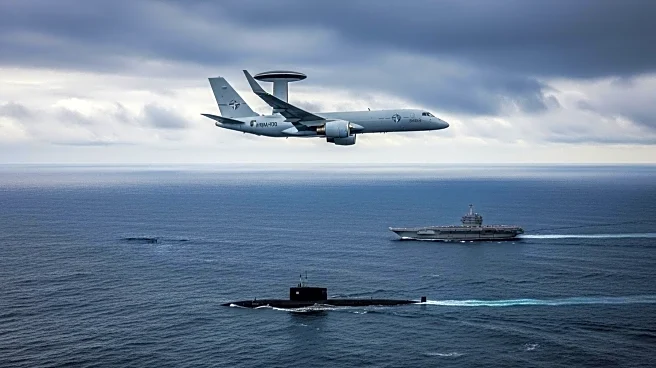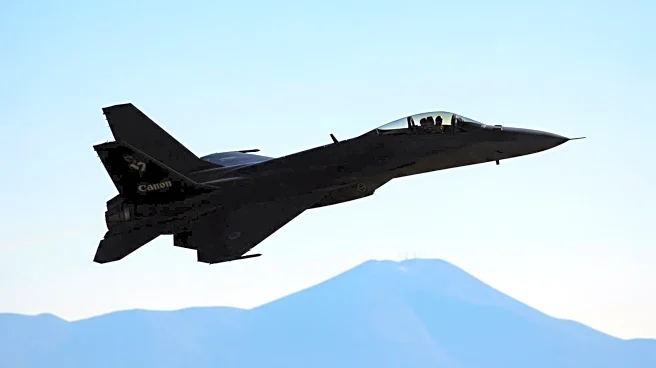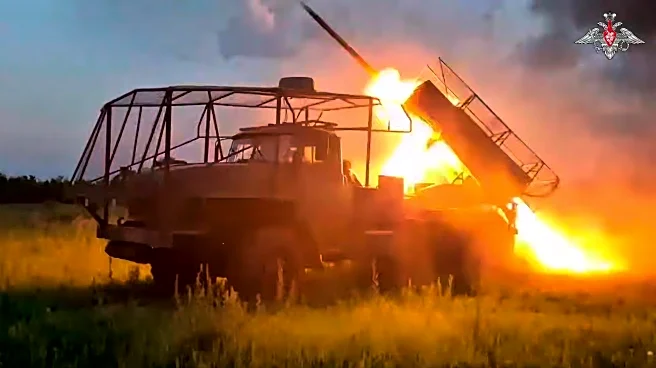What's Happening?
NATO maritime surveillance aircraft have been actively tracking a Russian submarine off the coast of Norway, near the USS Gerald R. Ford carrier strike group. The operation involves P-8 surveillance aircraft from the UK, the U.S., and Norway, conducting over two dozen sorties to monitor the submarine's movements. This heightened activity is considered a show of force by NATO, demonstrating its capability to track Russian naval operations. The USS Gerald R. Ford is currently engaged in joint drills with Norwegian forces as part of its deployment to the U.S. 6th Fleet area, emphasizing the U.S. Navy's commitment to European security.
Why It's Important?
The tracking of the Russian submarine underscores the strategic importance of the North Sea region and NATO's vigilance in monitoring potential threats. The presence of the USS Gerald R. Ford and its collaboration with Norwegian forces highlight the U.S. commitment to maintaining stability and security in Europe. This operation serves as a reminder of the ongoing geopolitical tensions between NATO and Russia, with both sides demonstrating their military capabilities. The situation also reflects the importance of international cooperation in ensuring regional security and deterring potential aggression.
What's Next?
The NATO operation is likely to continue as long as the Russian submarine remains in the vicinity of the USS Gerald R. Ford. Further joint exercises between U.S. and Norwegian forces are expected, reinforcing their military partnership. The situation may prompt diplomatic discussions between NATO and Russia, addressing concerns over naval activities in the region. Continued surveillance and intelligence gathering will be crucial in assessing the strategic implications of Russian naval movements.













